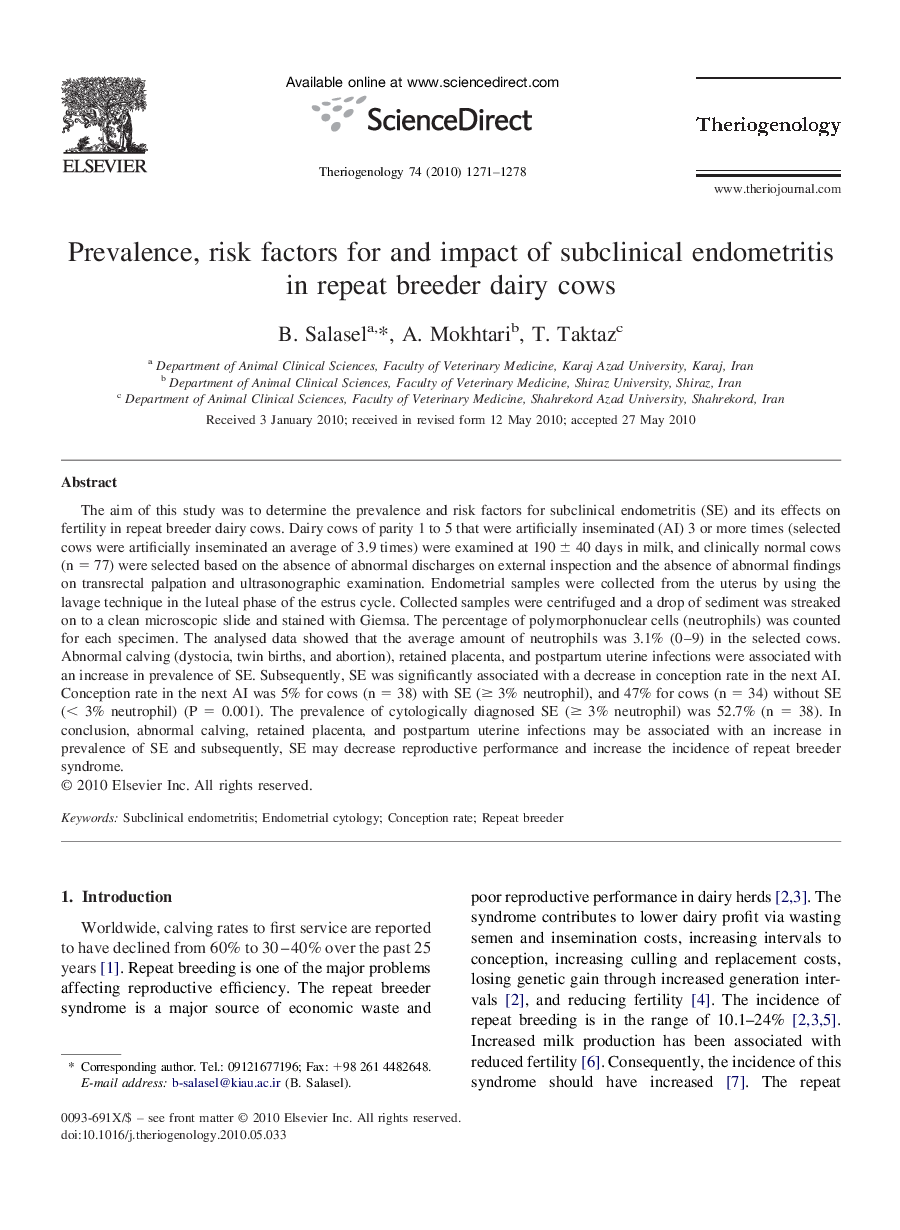| کد مقاله | کد نشریه | سال انتشار | مقاله انگلیسی | نسخه تمام متن |
|---|---|---|---|---|
| 2096302 | 1082161 | 2010 | 8 صفحه PDF | دانلود رایگان |

The aim of this study was to determine the prevalence and risk factors for subclinical endometritis (SE) and its effects on fertility in repeat breeder dairy cows. Dairy cows of parity 1 to 5 that were artificially inseminated (AI) 3 or more times (selected cows were artificially inseminated an average of 3.9 times) were examined at 190 ± 40 days in milk, and clinically normal cows (n = 77) were selected based on the absence of abnormal discharges on external inspection and the absence of abnormal findings on transrectal palpation and ultrasonographic examination. Endometrial samples were collected from the uterus by using the lavage technique in the luteal phase of the estrus cycle. Collected samples were centrifuged and a drop of sediment was streaked on to a clean microscopic slide and stained with Giemsa. The percentage of polymorphonuclear cells (neutrophils) was counted for each specimen. The analysed data showed that the average amount of neutrophils was 3.1% (0–9) in the selected cows. Abnormal calving (dystocia, twin births, and abortion), retained placenta, and postpartum uterine infections were associated with an increase in prevalence of SE. Subsequently, SE was significantly associated with a decrease in conception rate in the next AI. Conception rate in the next AI was 5% for cows (n = 38) with SE (≥ 3% neutrophil), and 47% for cows (n = 34) without SE (< 3% neutrophil) (P = 0.001). The prevalence of cytologically diagnosed SE (≥ 3% neutrophil) was 52.7% (n = 38). In conclusion, abnormal calving, retained placenta, and postpartum uterine infections may be associated with an increase in prevalence of SE and subsequently, SE may decrease reproductive performance and increase the incidence of repeat breeder syndrome.
Journal: Theriogenology - Volume 74, Issue 7, 15 October 2010, Pages 1271–1278